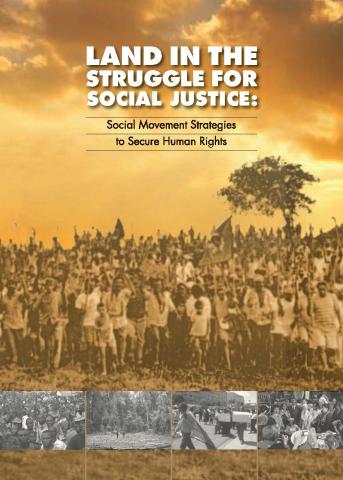Members of the SMWG use collective publication Land in the Struggle for Justice to advance human rights.
On 4 January, 2014, the ESCR-Net publication, Land in the Struggle for Justice: Social Movement Strategies to Secure Human Rights, was launched in Ogoniland, Nigeria. The document, which describes several human rights strategies employed by grassroots organizations, including the Movement for the Survival of the Ogoni People (MOSOP), was presented to community members at the conclusion of a large celebration to mark Ogoni Day. In addition to providing a tool for strategic dialogue and learning, the publication generated media coverage and has encouraged a new generation of MOSOP leaders to write and tell their own story.

For several years, ESCR-Net’s Working Group of Social Movements and Grassroots Groups has worked to promote mutual learning about the role of human rights in diverse struggles. Following the launch of the publication in June of 2013, ESCR-Net Members have identified several ways by which to utilize the resource to advance their objectives.
In June of 2013, Terra de Direitos, which co-produced the publication, coordinated a meeting in Curitiba, Brazil, to reflect on several of the featured strategies, together with senior representatives of the Movimento Sem Terra (MST), the Plataforma Dhesca and Ekta Parishad. Following this gathering, Ekta Parishad leaders decided to begin translation of the publication into Hindi for its eventual dissemination in India.
The publication, currently available in English, Spanish and Portuguese, features the human rights strategies employed by several social movements struggling for access to, and control over, their lands and territories. These include a chapter on the history of MOSOP’s work to promote environmental justice and land rights in Ogoniland, a chapter on the Nairobi Peoples Settlement Network (NPSN) and their utilization of human rights to raise awareness among, organize and mobilize residents of the city’s informal settlements. A third chapter describes the experience of the Platforma DhESCA (Platform for Economic, Social, Cultural and Environmental Rights in Brazil) in their collaboration with National Rapporteurs. A final chapter narrates the long process followed by the international indigenous rights movement that lead to the eventual adoption of the UN Declaration on the Rights of Indigenous Peoples.
